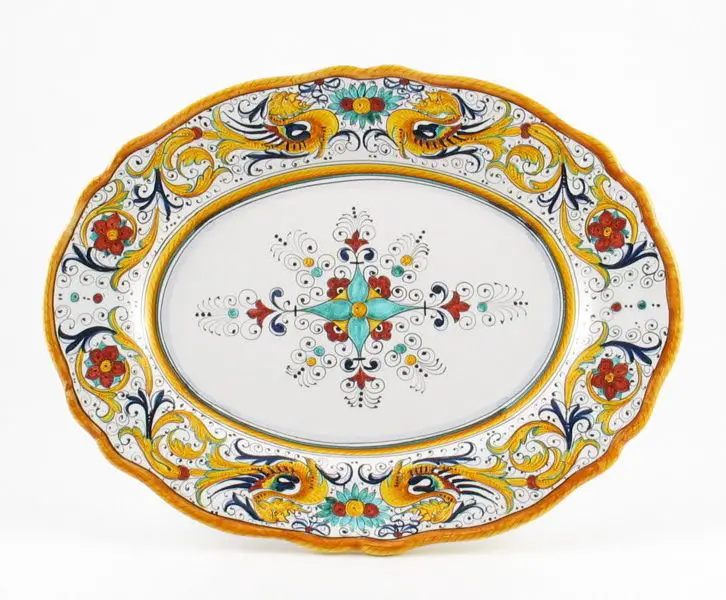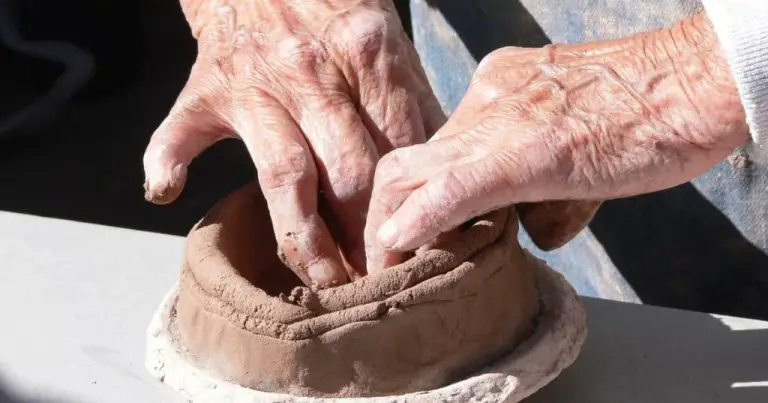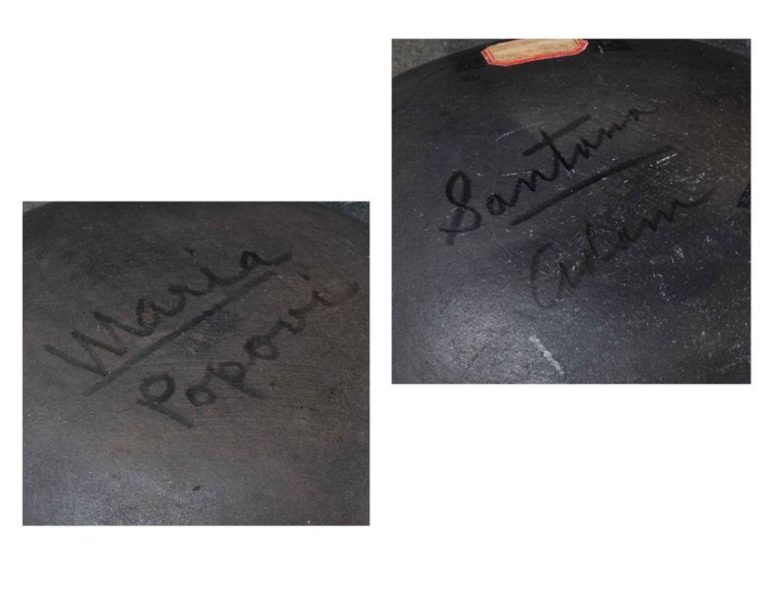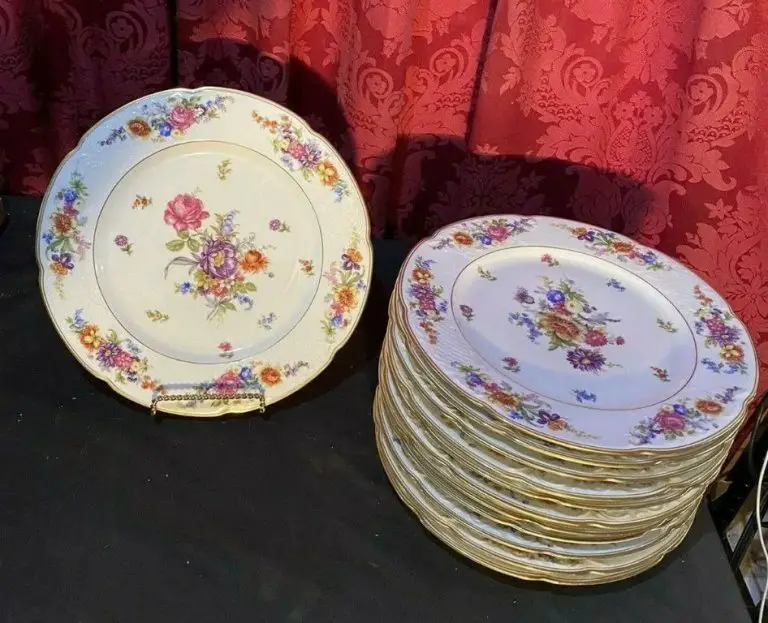What Style Of Pottery In Italy Is Best Known For?
Italian pottery has a long and rich history dating back to the Neolithic period. Ancient pottery artifacts have been discovered across Italy from as early as the 7th millennium BCE. Over the centuries, distinctive regional styles developed due to local clays, tastes, and techniques. By the Medieval and Renaissance periods, Italian ceramics were renowned across Europe for their beauty and quality.
Several iconic styles emerged that are still popular today. Majolica features brilliant glazes and intricate decorative patterns. Terracotta utilizes the warm earth tones of natural clay. Faience, inspired by ancient Egypt, has a glossy glaze covering opaque earthenware. Sgraffito involves scratching through a top color to reveal a contrasting base color beneath. Tin-glazed pottery has an opaque white glaze with hand-painted motifs. Slipware has colored slips trailed over a red or buff earthenware body. Lustreware has an iridescent metallic glaze finish.
Of all the Italian pottery styles, majolica is often considered the most iconic and best known globally. The vivid tin-glazed pottery with its hand-painted designs beautifully captures the spirit of the Italian Renaissance.
Majolica
Majolica refers to Italian tin-glazed pottery produced from the 15th to 18th centuries. The name comes from the island of Majorca, where an early production center existed. Majolica first emerged during the Renaissance period in central Italy, particularly in the regions around Florence, Faenza, and Deruta.

Majolica is characterized by its white glaze background and vibrant painted decorative designs. The glaze provides a smooth, white canvas for the colorful painted motifs and patterns. Common motifs include floral designs, fruits, animals, mythical creatures, coats of arms, and geometric patterns.
There are two main types of majolica – istoriato wares and berettino wares. Istoriato majolicas feature intricate figurative scenes often derived from history, religion, or mythology. Berettino majolicas have simpler all-over repeating patterns.
Majolica was originally inspired by Hispano-Moresque pottery from Spain and Moorish pottery from North Africa and the Middle East. Italian artisans added their own artistic sensibilities, particularly drawing from the Italian Renaissance art movement. This resulted in the distinctive and highly decorative Italian majolica style.
Sources:
https://www.marthastewart.com/8114412/majolica-pottery-collecting-guide
https://www.invaluable.com/blog/majolica/
Terracotta
Terracotta is an ancient style of pottery that has been produced in Italy for thousands of years. The term “terracotta” means “baked earth” in Italian. As the name suggests, terracotta pottery is made from natural clay which is molded and then fired at high temperatures to harden it.
Terracotta is known for its rustic, earthy look and feel. It’s a porous material that can vary in color from red and orange to brown, yellow, and gray. The clay used to make terracotta pottery in Italy often contains iron oxide, which gives the finished product its iconic red-orange hue. Terracotta has long been prized for its durability, affordability, and ability to keep food cool (source: https://www.ebay.com/itm/325273358637).
Terracotta pots and bakeware have been used traditionally in Italian cooking to slow cook soups, bake breads, and store/ferment food. Modern uses include flower pots, sculptures, wine coolers, and ornamental pieces. There are many regional variations in Italian terracotta. For example, the Impruneta region near Florence is famous for its distinctive orange terracotta made from local clay. Sicily is known for more elaborate, decorative terracotta pieces inspired by Arabic and Greek influences. Umbria produces high-quality architectural terracotta, while Sardinia makes primitive style terracotta figurines.
Faience
Faience pottery originated in Italy in the 1400s and was inspired by imported ceramics from the Near East. The name “faience” comes from Faenza, a city in Italy known for producing this style of pottery.
Faience is characterized by its white glaze with bright decorative colors like blue, yellow, and green painted on top. The white glaze was made with tin oxide which gave it a milky, opaque quality. Decorative motifs included geometric patterns, foliage, flowers, fruits, and animal scenes painted freehand directly onto the unfired glaze.
Popular styles of Italian faience included maiolica from Florence and Deruta with intricate Renaissance-inspired designs, and Sicilian pottery from Caltagirone with bright floral and citrus fruit motifs. Faience pottery was frequently used as tableware and apothecary jars due to its durability and decorative appeal.
Sources:
https://www.ebay.com/itm/175882625526
https://picclick.co.uk/Corrao-Palermo-Hand-Painted-9-Plate-Faience-Pottery-294308849341.html
Sgraffito
Sgraffito is a decorative pottery technique that involves applying layers of contrasting colored slips or glazes to leather-hard clay and then scratching through the layers to create designs. It has ancient roots but became especially popular during the Renaissance in Italy.
Regional styles of sgraffito emerged across Italy. For example, in Umbria, sgraffito tended to feature geometric patterns and nature motifs using earth tones. In Tuscany, sgraffito was done with bold outlines and vibrant colors like manganese purple. The town of Bassano in Veneto became well known for a light green glaze called Bassano Green that was often used as a background slip in their sgraffito pieces.
Contemporary ceramic artists are still using and interpreting the sgraffito technique today. Modern pieces may only scratch through one layer rather than multiple contrasting layers. The designs are also more whimsical and abstract compared to traditional sgraffito. However, the hand-carved quality gives modern sgraffito a distinct rustic feel linking it to its decorative ancestry.
Tin-Glazed Pottery
Tin-glazed pottery, also known as maiolica, is a distinctive style of ceramic that emerged during the Italian Renaissance. It is characterized by a white glaze made opaque by the addition of tin oxide, which acts as a background for brightly colored decoration painted onto the glaze.
The technique of tin-glazing originated in the Middle East in the 8th century before spreading to Spain and then Italy in the 14th century. By the mid-1500s, Italian maiolica production was thriving, with the establishment of important centers in Faenza, Deruta, Gubbio, Urbino, and Castel Durante. Maiolica reached the height of popularity during the 16th century, when istoriato wares depicting historical and biblical scenes were in high demand.
Italian maiolica is prized for its brilliant hues and intricate narrative imagery. Common motifs include coats of arms, floral and plant designs, architectural vignettes, and figurative scenes drawn from mythology, religion, history and everyday life. By the 17th century, the istoriato style declined as maiolica became more dominated by modular, repetitive decoration. Nonetheless, maiolica remains one of Italy’s most iconic ceramic traditions.
Slipware
Slipware refers to pottery decorated with colored liquid clay slips, often in contrasting colors. It emerged as a popular pottery style during the Renaissance era in Italy. The production process for slipware involves coating the unfinished pottery piece with liquid clay slips using a technique called slip trailing. Designs and patterns are created on the surface by trailing the slips from a pottery slip cup. Traditional Italian slipware features abstract geometric patterns, spirals, foliage shapes, and scrolling vine designs in manganese purple and copper green.
In the 17th and 18th centuries, Staffordshire potters in England were inspired by Italian tin-glazed maiolica and localslipware traditions to create their own unique style of English slipware. This features earthy colors like browns, yellows, and greens painted in thick bold brushstrokes over a white background. While traditional Italian slipware was produced on the potter’s wheel, English slipware was made using press-molded techniques. The trailing slips were often used to accentuate the molded design.
Notable Italian slipware artisans include Guido Andlovitz, who revived the Renaissance techniques in the 20th century, and Pietro Melandri, whose intricately painted and freely brushed designs on traditional Italian forms helped bring Italian slipware back into popularity.
Sources:
https://www.flickr.com/photos/david_sankey/29870897892
Lustreware
Lustreware refers to pottery with an iridescent metallic glaze finish. The technique originated in 9th century Persia and was later adapted by Italian potters.
The distinctive iridescent glaze on lustreware creates a glowing rainbow-like effect. This is achieved through applying a metallic oxide coating like copper or silver to already-glazed pottery and then refiring the piece at a lower temperature in a kiln with a reducing atmosphere. The process causes the metallic oxides to reform as a microscopically thin film on the surface, resulting in the signature lustrous sheen.
(Source)
There were notable regional variations in Italian lustreware. In Tuscany, pottery centers like Florence and Siena were known for a rich ruby red colored glaze called “rubino.” Deruta and Gubbio in Umbria produced wares with metallic blue, green and yellow glazes. The most vibrant multicolored polychrome effects came from Faenza in Emilia-Romagna.
(Source)
Most Iconic Style
Of the many styles of Italian pottery, majolica stands out as perhaps the most iconic and culturally significant. Majolica refers to Italian tin-glazed pottery that is decorated with colorful glazes and imagery. It emerged in the 15th century and reached its peak during the Renaissance, when it was prized for its beauty and used to decorate palaces and noble houses.
In comparison to other Italian pottery styles like terracotta or faience, majolica is distinguished by its glossy white glaze and vivid palette which allowed for elaborate decorative motifs. The town of Deruta became the foremost center of majolica production. Deruta majolica often featured biblical or mythological narrative scenes, foliage, geometric patterns, and coats of arms, all painted by hand.
Beyond its aesthetic virtues, majolica holds cultural importance. During the Renaissance, majolica pieces reflected the rediscovery of classical culture and humanist philosophy. Majolica brought color and cheerfulness into interior designs and conveyed the tastes and values of nobility and wealthy merchants. Over the centuries, majolica evolved with the styles of the day from Renaissance to Baroque to Neoclassical, mirroring broader cultural shifts.
While the popularity of majolica declined in the 19th century, it experienced a revival in the 20th century as museums and collectors recognized it as a quintessential Italian art form. The legacy of majolica continues today in the work of Italian ceramic studios. With its rich history and tradition of handcrafted artistry, majolica remains the most iconic style of Italian pottery.
Conclusion
Italian pottery is renowned for its long tradition of innovation and artistry. The most iconic and influential style of Italian pottery is Majolica, which developed during the Renaissance era in the 15th and 16th centuries. Majolica is characterized by its vivid colors, intricate designs, and tin-based glaze. The best examples of Majolica came from centers like Faenza, Urbino, and Deruta. Majolica’s rich decoration and visual appeal made it popular for servingware and decorative objects across Renaissance Europe.
While Majolica may be the most famous, Italy has cultivated many distinctive regional styles over the centuries. Terracotta, with its earthy tones, has been crafted since ancient times for everything from floor tiles to figurines. The island of Sicily became known for brightly painted Faience pottery. Sgraffito uses layered colored slips for a scratch-work effect. Tin-glazing led to lustrous wares like those from Deruta and Montelupo. Through both innovation and continuation of tradition, Italian pottery demonstrates a vital creative spirit.






